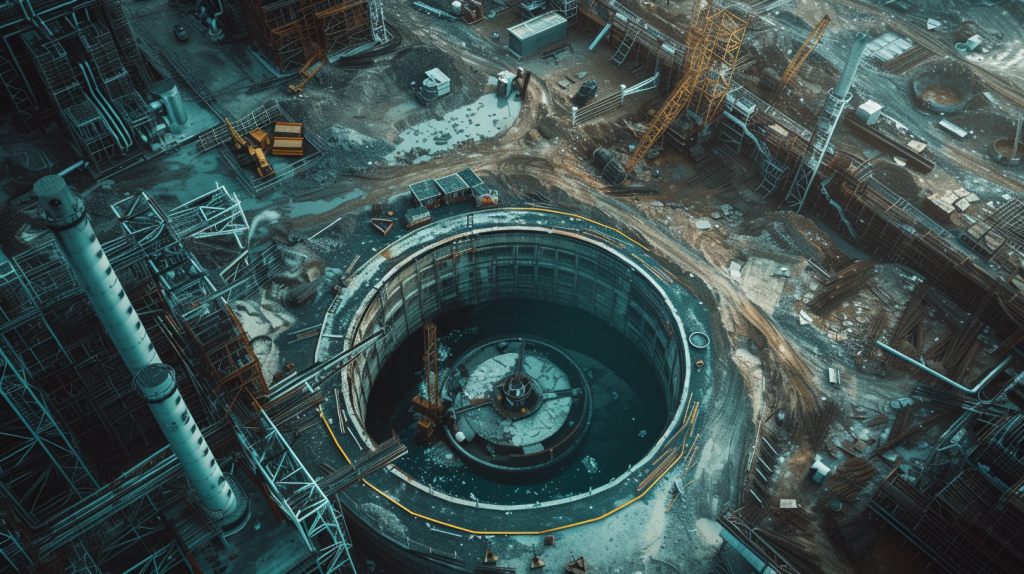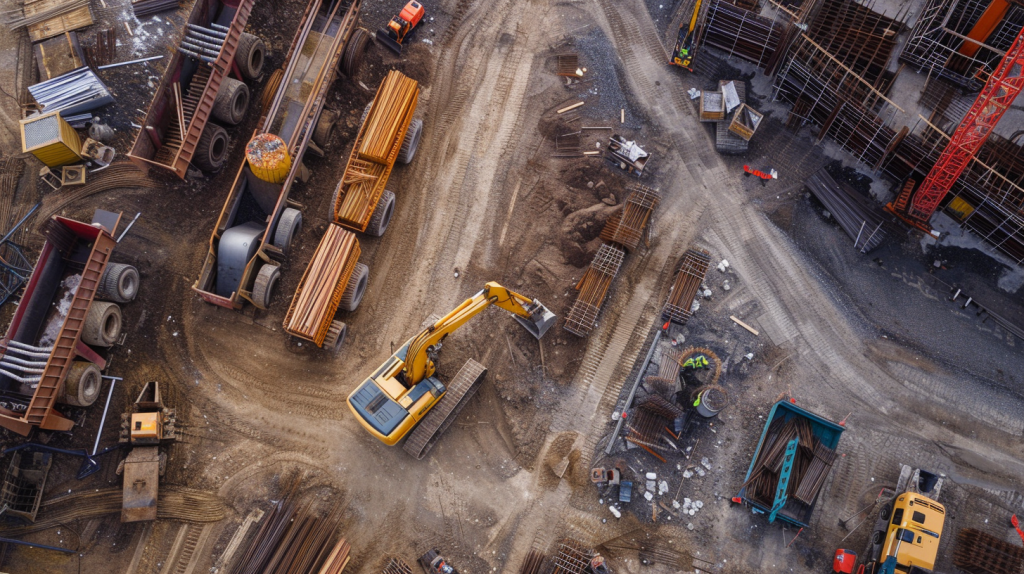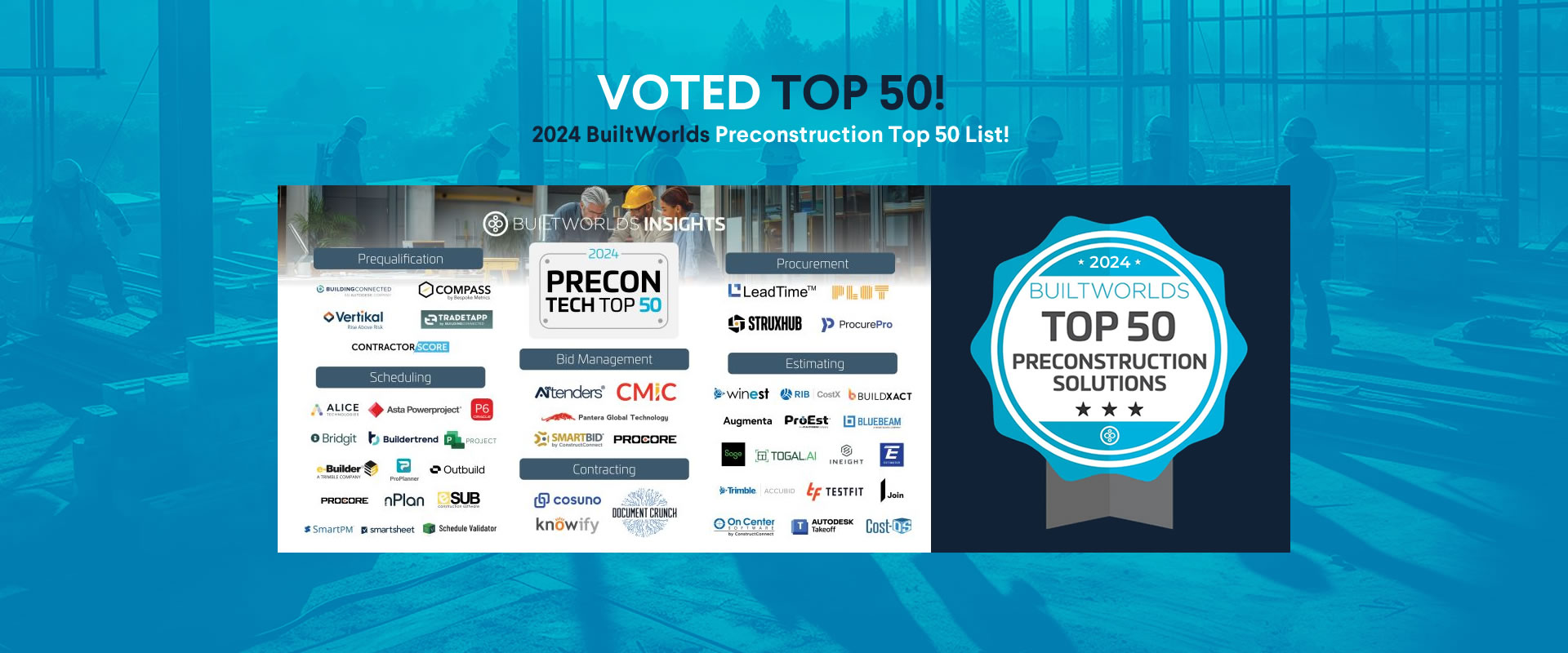Top 15 Ways AI and Digital Construction Management Tools Improve Waste Reduction and Recycling in Commercial Construction
Table of Contents:
The Emergence of AI in Construction
In today’s world, the commercial construction industry is at a pivotal moment, embracing digital transformation to tackle some of its most pressing challenges. Among these challenges, waste reduction and recycling are critical for environmental sustainability and operational efficiency. Artificial Intelligence (AI) and digital construction management tools are at the forefront of this transformation, offering innovative solutions to manage and reduce waste effectively.

AI: A Catalyst for Change in Construction Practices
AI’s role in construction is multifaceted and evolving. It’s not just about automating tasks; it’s about using data-driven insights to optimize every aspect of the construction process, including waste management. AI enables construction managers to make informed decisions that lead to less waste production and more efficient recycling practices.
The Importance of Waste Reduction and Recycling
Waste reduction and recycling are vital for the construction industry, not only for environmental reasons but also for economic and social sustainability. Reducing waste means less material goes to landfills, lowering environmental impact and reducing costs associated with waste disposal. Recycling materials contribute to a circular economy, where resources are reused and repurposed, minimizing the need for new raw materials.
Digital Tools: Revolutionizing Construction Management
Digital construction management tools integrate AI to analyze vast amounts of data, streamline processes, and provide actionable insights. These tools enable construction projects to be more agile, responsive, and efficient in their use of materials, leading to significant reductions in waste and enhanced recycling efforts.
Now, let’s delve into the 15 ways AI and digital tools are reshaping waste reduction and recycling in commercial construction:
1. Predictive Analytics for Material Usage
Predictive analytics, a cornerstone of AI, is revolutionizing material usage in construction. By forecasting the exact requirements based on project scope and historical data, these tools are dramatically reducing overordering – a common cause of material wastage. This precision not only ensures that projects are more sustainable but also contributes to significant cost savings.
Reducing Overordering and Minimizing Waste
Overordering of materials, often due to uncertainties in project scopes and timelines, leads to surplus that often goes to waste. AI mitigates this by providing a more accurate forecast of material needs, allowing for more precise ordering. This approach reduces the volume of unused materials that typically end up as waste, aligning construction practices with sustainability goals.
Enhancing Efficiency and Cost-Effectiveness
By accurately predicting material needs, AI-driven tools enable construction projects to operate more efficiently. Less time and resources are wasted on managing excess materials, leading to smoother project workflows and cost savings. These savings can be reallocated to other aspects of the project or invested in more sustainable materials and technologies.
2. Enhanced Material Tracking and Inventory Management
Real-time tracking and inventory management are essential in reducing construction waste. AI-powered tools provide a comprehensive view of material usage, storage, and movement, allowing superintendents to manage resources more effectively.
Maximizing Resource Utilization
With advanced tracking systems, construction managers can monitor materials from the point of order to usage on the site. This continuous oversight helps in identifying and rectifying any inefficiencies in material usage, ensuring maximum utilization of every resource procured.
Streamlining Inventory Management
Effective inventory management is key to minimizing waste. AI tools help in maintaining optimal inventory levels, reducing the chances of material degradation or loss due to prolonged storage. This not only minimizes waste but also ensures that materials are readily available when needed, thus maintaining project timelines.
3. Efficient Material Logistics and Delivery Scheduling
AI algorithms excel in optimizing the logistics and scheduling of material deliveries. By analyzing traffic patterns, construction schedules, and delivery timelines, AI ensures that materials are delivered exactly when and where they are needed.
Reducing On-Site Storage Needs
Timely delivery of materials reduces the need for extensive on-site storage, which often leads to material degradation and waste. AI’s precise scheduling ensures that materials are not delivered too early, reducing the risk of damage and subsequent waste.
Minimizing Transit-Related Waste
Efficient logistics also reduce waste associated with material transportation. By optimizing delivery routes and schedules, AI minimizes the time materials spend in transit, reducing the likelihood of damage and ensuring the materials’ integrity upon arrival at the construction site.
4. Improved Material Selection and Sustainability Rating
Digital tools assist in selecting the most appropriate materials for construction projects, focusing not only on cost and performance but also on sustainability. AI algorithms can analyze a material’s lifecycle, from production to disposal, recommending options with the lowest environmental impact.
Promoting Eco-Friendly Materials
AI helps in identifying materials that are recyclable, sourced sustainably, or have a lower carbon footprint. This encourages the use of eco-friendly materials in construction, contributing to the overall sustainability of the project.
Enhancing Long-Term Sustainability
The use of sustainable materials has long-term benefits. Buildings constructed with such materials often have lower maintenance needs and better energy efficiency, contributing to the sustainability of the structure throughout its lifecycle.
5. Automated Waste Sorting and Recycling Processes
AI-driven automation is transforming waste sorting and recycling on construction sites. Automated sorting systems can efficiently separate materials, increasing the amount and quality of materials that can be recycled.
Streamlining Recycling Efforts
Automated sorting systems, powered by AI, ensure that recyclable materials are efficiently separated from non-recyclable waste. This increases the volume of materials that can be repurposed or recycled, reducing the amount of waste that ends up in landfills.
Enhancing Recycling Quality
AI systems can identify and sort materials with a high degree of accuracy, ensuring that the quality of recycled materials is maintained. This is crucial for the viability of recycled materials in construction and other industries.
6. Data-Driven Decision Making for Resource Allocation
Data-driven decision-making is at the heart of AI’s capabilities. In construction, this means resources are allocated more judiciously, reducing unnecessary usage and waste.
Optimizing Resource Allocation
AI analyzes various factors such as project timelines, workforce availability, and material usage patterns to optimize resource allocation. This ensures that resources are used where they are most needed, reducing waste due to misallocation.
Enabling Proactive Waste Management
By providing insights into resource utilization, AI enables construction managers to proactively manage waste. They can identify areas where waste is likely to occur and implement strategies to prevent it, such as adjusting work processes or reassigning resources.

7. Advanced Planning for Waste Management
AI facilitates advanced planning for waste management by predicting the types and volumes of waste that will be generated at different stages of a project. This foresight allows for the implementation of targeted strategies to minimize waste production.
Anticipating Waste Generation
Predictive models can forecast the amount and type of waste likely to be generated during each phase of construction. This enables project managers to prepare appropriate waste management and recycling plans well in advance.
Tailoring Waste Management Strategies
With the information provided by AI, waste management strategies can be tailored to the specific needs of each project phase. This may include scheduling additional recycling activities, arranging for specialized waste processing, or modifying construction techniques to reduce waste.
8. Integration with Green Building Standards
AI tools play a crucial role in ensuring that construction projects comply with green building standards like LEED or BREEAM. These standards emphasize waste reduction and recycling as key components of sustainable building practices.
Automated Compliance Monitoring
AI systems can automatically monitor various aspects of construction projects to ensure they meet green building standards. This includes tracking material usage, waste generation, and recycling rates, providing a comprehensive overview of a project’s environmental impact.
Facilitating Certification Processes
Compliance with green building standards often requires extensive documentation and reporting. AI tools streamline these processes, making it easier for projects to achieve certification and recognition for their sustainability efforts.
9. Enhanced Collaboration for Sustainable Practices
Digital construction management platforms are fostering a culture of collaboration centered on sustainability. These platforms bring together architects, engineers, contractors, and other stakeholders, enabling them to work cohesively towards common sustainability goals.
Promoting Shared Responsibility
By providing a unified platform for communication and data sharing, digital tools encourage all project participants to take shared responsibility for waste reduction and recycling. This collaborative approach ensures that sustainability goals are integrated into every aspect of the construction process.
Facilitating Information Exchange
AI-enhanced platforms enable seamless exchange of information related to sustainability practices, such as waste management plans, recycling initiatives, and material choices. This ensures that all parties are informed and aligned in their efforts to minimize waste and maximize recycling.
10. Real-Time Reporting and Analytics on Waste Management
Real-time reporting and analytics provide invaluable insights into waste management practices on construction sites. AI tools can track waste generation and recycling in real-time, offering a transparent view of a project’s environmental performance.
Monitoring Waste Streams
AI systems can monitor and analyze different waste streams, providing detailed data on the types and quantities of waste being produced. This information is crucial for identifying areas where waste reduction efforts can be improved.
Evaluating Recycling Efforts
Real-time analytics also enable construction managers to evaluate the effectiveness of recycling initiatives. They can track how much material is being recycled, the quality of recycled materials, and the overall impact of recycling on waste reduction.
11. Predictive Maintenance to Reduce Material Waste
Predictive maintenance, enabled by AI, ensures that construction equipment is maintained in optimal condition, reducing the likelihood of malfunctions that can lead to material waste.
Extending Equipment Life
By predicting when equipment will require maintenance, AI-driven systems can prevent breakdowns and extend the lifespan of construction machinery. This not only reduces the need for repairs and replacements but also minimizes the waste generated by equipment failures.
Improving Operational Efficiency
Well-maintained equipment operates more efficiently, reducing the risk of errors and accidents that can lead to material waste. Predictive maintenance ensures that machinery is always functioning at its best, contributing to smoother construction processes and less waste.
12. Optimization of Building Design for Waste Reduction
AI tools are instrumental in optimizing building designs to minimize waste. By simulating different design scenarios, these tools can identify the most efficient use of materials and space, reducing excess and waste in the construction process.
Enhancing Design Efficiency
AI-driven design tools can analyze various design options to determine which configurations use materials most efficiently. This helps in creating designs that minimize waste during construction and throughout the building’s lifecycle.
Supporting Sustainable Design Practices
AI also supports sustainable design practices by evaluating the environmental impact of different design choices. This includes assessing the potential for waste reduction, energy efficiency, and the use of recyclable materials, promoting designs that are not only aesthetically pleasing but also environmentally responsible.
13. AI-Assisted Deconstruction Planning
For renovation or demolition projects, AI can assist in deconstruction planning, identifying materials that can be salvaged, reused, or recycled. This approach not only reduces waste but also preserves valuable resources.
Maximizing Material Recovery
AI algorithms can analyze structures to determine which materials can be safely and efficiently recovered during deconstruction. This maximizes the amount of material that can be reused in other projects, reducing the need for new resources.
Streamlining Deconstruction Processes
AI-driven planning also streamlines the deconstruction process, ensuring that materials are removed in a manner that preserves their integrity and usability. This organized approach to deconstruction reduces waste and facilitates the recycling of materials.
14. Training and Awareness Programs
Training and awareness programs are crucial in promoting waste reduction and recycling in construction. AI and digital tools can deliver personalized training programs that adapt to the learning styles and needs of construction personnel.
Enhancing Knowledge and Skills
Interactive and engaging training programs, powered by AI, can effectively educate construction workers and managers about best practices in waste management and recycling. This knowledge is essential for implementing sustainable practices on construction sites.
Fostering a Culture of Sustainability
By raising awareness and building skills, AI-driven training programs help in fostering a culture of sustainability within construction teams. This cultural shift is key to ensuring that waste reduction and recycling are prioritized in every aspect of construction.
15. Life Cycle Assessment and Environmental Impact Analysis
AI and digital tools are capable of performing comprehensive life cycle assessments and environmental impact analyses. These assessments evaluate the sustainability of materials and construction methods over the entire lifecycle of a building.
Evaluating Long-Term Environmental Impact
Life cycle assessments provide insights into the long-term environmental impact of construction materials and methods. This includes analyzing factors such as energy consumption, greenhouse gas emissions, and the potential for recycling at the end of the building’s life.
Supporting Sustainable Decision Making
Environmental impact analyses help construction managers make decisions that are not only beneficial in the short term but also sustainable in the long run. This includes choosing materials and construction methods that minimize environmental impact throughout the building’s lifecycle.
The integration of AI and digital construction management tools marks a significant step forward in the commercial construction industry’s journey towards sustainability. These technologies are not just enhancing the efficiency and cost-effectiveness of construction projects; they are driving a paradigm shift in how we approach waste reduction and recycling. By optimizing material usage, streamlining logistics, and promoting sustainable practices, AI and digital tools are paving the way for a construction industry that not only builds structures but also protects and preserves our planet. As we continue to embrace these innovations, we move closer to a future where sustainable construction is not just an aspiration but a standard practice.
StruxHub is a construction project management software that helps you manage projects from start to finish. It offers features like task management, document management, and communication tools. StruxHub can help you save time and money, improve communication, collaboration, and decision-making.
To learn more about how StruxHub can streamline your construction management processes, request a demo today. By completing our form, you’ll hear from our team soon to discuss how StruxHub can help you:
- Schedule construction material deliveries with your trades
- Coordinate construction site resources and on-site logistics
- Digitize work permits and inspection forms
- Communicate and track P6 and Excel schedules
- Broadcast announcements to all construction workers
Don’t miss out on the opportunity to optimize your construction management processes with StruxHub. Sign up for a free demo today.




